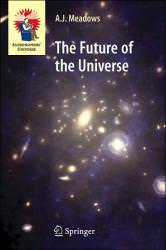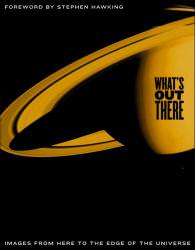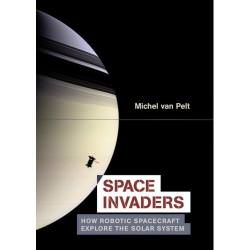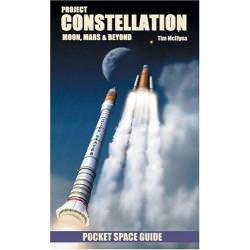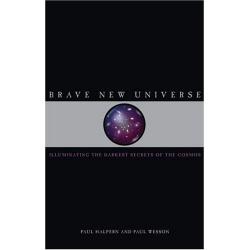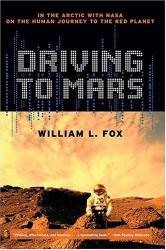Life was so much simpler when a person’s world extended no further than a long day’s walk, while a night time’s pleasure was viewing twinkling diamonds. But now we know that Earth’s continents rush around like bumper cars. Our Sun eats so much hydrogen that it’s going to explode. And our galaxy is crashing its way through another. These severe sounding events, and others, permeate through the book The Future of the Universe by A.J. Meadows. And, as it shows, our simplistic view is being well replaced by much grander visions.
As this book’s title aptly implies, our universe and all its contents are changing and leading to a future that’s different from today. With this assurance, Meadows’ book discusses what we may expect as time unfolds. True, we personally won’t have to worry about much of it. The discussed time frames extend from thousands to billions of years into the future. However, this book raises a profound surreal feel by giving the reader knowledge of the future, even if not for the near-term. Or at least, the odds say that there won’t be a comet impacting, or magnetic twist, or a dimming sun any time soon. For, though this book describes the processes, the moment is up to anyone’s guess.
Given that the ‘when’ is unknown, Meadows concentrates upon the ‘what’ in his book. And the ‘what’ refers to local changes, such as with our Sun’s radiation level, the Earth’s heat flow, or the vagaries of the Earth’s atmosphere. With these, he’s assured the reader that we are very fortunate that so many things came together to support life. Yet, he presses on. He heads out to consider asteroids, comets and neutron star explosions. Last, in looking at the really big picture, there’s galactic curtains and the local bubble that come into play. All these have or could impact Earth and the life that holds fast upon its surface.
This consideration of life is the main driver in Meadows’ book. He clearly shows that innumerable events can and very likely did greatly effect all types of life throughout history. Whether a wobbling Sun, a wayward asteroid, or colliding brown dwarfs, he shows that our solar system was and still is interacting with many nasties of space. However, what really makes his book is the grand scale of the contents. There’s nothing here for short-term insurance brokers. It’s all about a long term and fascinating prognosis that our future on Earth is doomed. Meadows shows it’s just a matter of time, eventually.
Though this consideration of our future appears too fanciful, Meadows bases it all upon well accepted principles and historical examples. Further, he recovers these principles in a straight forward, smooth manner. It’s this deceptive style of writing that misleads the reader into understanding the big picture without worrying about the details. Given this style, the book’s well geared toward a reader without a technical background. To do this, Meadows also keeps the language at a generalist level. If you’re comfortable reading a broadsheet newspaper, then you will have no problem with this book. Yet, hiding behind the easy going prose lie the reasoning about the life of stars, the formation of planets and the possible existence of other universes.
Though the book doesn’t come across as a wake up call for our species, it certainly will add to the impetus. For certainly, in reading it, anyone will realize that our little bit of paradise called Earth is going to have a rough finale. For those who like the big picture, whether a specialist or simply curious, this book connects together many of these disparate dots.
Our Sun seems never to change. And, only with great patience do we know for certain that the stars move independently across the night sky. But the universe is anything but a calm quiet place. A.J. Meadows in his book The Future of the Universe shows that not only is the universe a busy place, it’s also going to be quite nasty for life on Earth.
Read more reviews online, or purchase a copy from Amazon.com

